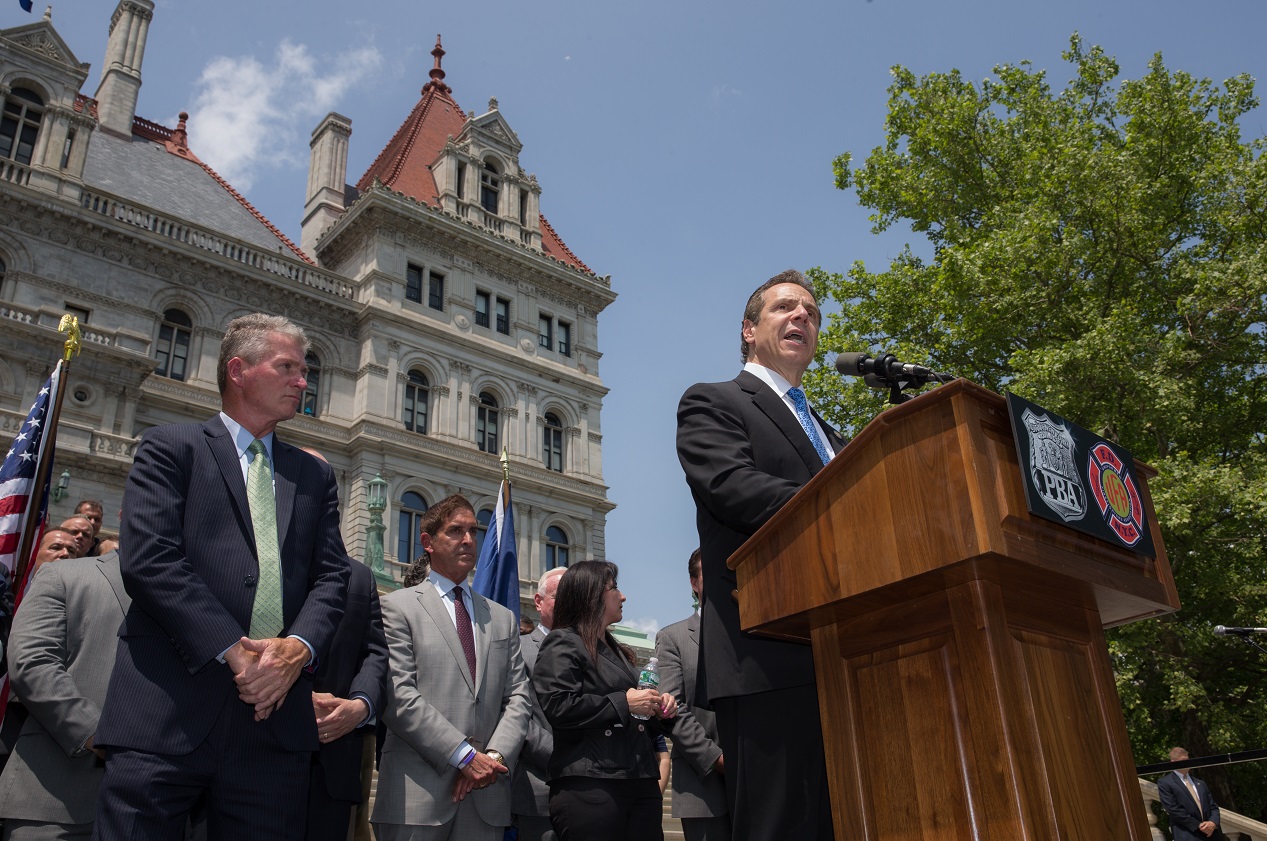By Charles Bowles
Governor Cuomo, her name is Cynthia Nixon, not “My Opponentâ€.
Cuomo has been running the New York Governor’s Democratic Primary as a referendum against Donald Trump. In doing so, he has dismissed Cynthia Nixon in the primary: an oversight which will, in the long run, serve to dash any presidential ambitions he has in 2020.
These actions stand in stark contrast to those of his father. Mario Cuomo was infamously indecisive about running for president in 1992. He had two chartered planes sitting on the tarmac at Albany County Airport to shuttle him and his press corps to Concord, N.H. to announce his run for the Democratic nomination, but never got on the plane. His son, Andrew, is attempting to contrast himself with the current President through his gubernatorial campaign, and does not seem to have the same introspection that prevented his father from running for the presidency.
The last major governor’s primary poll, conducted by Siena College, showed Cuomo holding a two-to-one advantage among likely Democratic voters in the primary, leading 60 percent to Nixon’s 29 percent. In the face of those numbers, you wouldn’t think Nixon has made much of an impact. But you’d be wrong.
In their only gubernatorial debate, there was a fierce atmosphere with a lot of cross-talk, sniping, and fundamental differences on the future of New York. Most notable, for most of the debate, Cuomo didn’t have the nerve to say Nixon’s name, referring to her only as “My Opponentâ€. Cuomo’s disdain for Nixon is obvious as he has been running his campaign as if he is running unopposed, only acknowledging her to attempt to cut her off. Nixon held her own in the debate highlighting the differences between her proposed policies and Cuomo’s.        Â
Nixon has run on a progressive platform: single-payer health care, full legalization of marijuana, universal rent control for New York residents, and other planks of progressive candidates around the country. Nixon’s campaign has focused on education and LGBTQ activism for New York and nationally. Her agenda is so far to the left of Cuomo that, despite their shared party values, it has shined a light on how conservative his policies actually are in comparison.
A key point of Nixon’s campaign is the growing level of economic inequality in New York. As her campaign website highlights, the top one percent of New Yorkers earn 45 times more than the bottom 99 percent. The Gothamist, citing a 2017 New York City’s Independent Budget Office report, states that New York City’s top 0.1 percent makes four times the income of the bottom half of earners. Nixon has put the blame on Cuomo by claiming he has been giving massive tax breaks to corporations and the super-rich while poor New Yorkers suffer.
In 2014, Cuomo struck a deal with the New York Senate Republicans to lower the corporate tax to its lowest levels in a half-century and completely eliminated the corporate tax rate for manufacturers. This deal, in the eyes of Nixon and her supporters, show that his priorities lie with the top earners and corporations instead of the needs of the common New Yorker. Â Â Â Â Â Â Â
Nixon has also focused on Cuomo’s inability to gain control of the New York State Senate. When the Independent Democratic Conference  dissolved earlier this year it created a rift, causing the Senate to effectively be controlled by the Republicans during Cuomo’s tenure as governor. He seemed incapable of returning them to the party fold. Though he eventually succeeded, one senator held out, causing the power to tilt back to the Republicans in 2018. Nixon has seized on this as a sign of dysfunction in Albany and in the state’s Democratic party.
So how has Cuomo chosen to deal with being out-progressived? Even though he’s chosen to ignore Nixon, he seems to have suddenly found interest in progressive causes. While he’s often been cited as calling marijuana a “gateway drug,†he is now working on a bill with the State to legalize and regulate its sale. Why? Nixon may have pushed him to it. Sensing danger, he announced a state legalization study in January, but did not change his personal stance on marijuana until early August. He seemed to recognize the political momentum for legalization and hopped on the bandwagon. Nixon has rattled him, but Cuomo only has himself to blame for the position that he is in during this race and his presidential aspirations.
As Vox’s Matthew Yglesias observed, “The biggest risk to his presidential aspirations was that as governor of a large blue state, he would find himself pushed to tack left on policy and render himself ‘unelectable’ in a national race.†This “moderate approach†strategy soured his relationship with the progressive wing of the Democratic Party in New York. As the Democratic Party moves farther to the left, Cuomo stagnates in the eyes of the progressive wing of the Democratic Party.
Cuomo is making the same mistake that Hillary Clinton made in her 2016 presidential run by believing there are enough centrists and independents to bolster a presidential run, and ignoring the fervor on the progressive end of the Democratic party. The further polarization of each political party makes “moderates†like Cuomo a rarity and decreases the likelihood he could win nationally.
If Cuomo is to have any chance at national office, he needs to embrace the progressive wing of the state’s Democratic party and it starts with one person.
Her name is Cynthia Nixon. Call her by her name.
Editor’s Note: The Wagner Review does not endorse any political candidates. We do, however, encourage political engagement. New Yorkers go to the polls to vote in the New York State primary on Thursday, September 13th.




